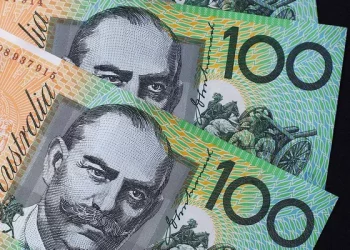The Thai Baht (THB) is the official currency of Thailand and one of the most traded currencies in Southeast Asia. Managed by the Bank of Thailand (BoT), the baht has a rich history that reflects the nation’s economic evolution. For traders, investors, and tourists, understanding the nature of the baht is crucial to making informed financial decisions. This guide delves into the stability of the baht and offers practical insights for trading it effectively.
Historical Background of the Thai Baht
The Thai Baht has undergone significant transformations since its inception. Originally pegged to silver, it was later pegged to various foreign currencies, including the British pound and the U.S. dollar. The baht faced a major crisis during the 1997 Asian Financial Crisis, when it was forced to float freely, leading to severe devaluation. Since then, it has adopted a managed float system, where the BoT intervenes to prevent excessive volatility.
Economic Factors Influencing the Baht’s Stability
- Inflation Rate: Thailand generally maintains low inflation, which contributes to the baht’s value stability. However, fluctuations in global commodity prices can influence inflation and, by extension, the currency.
- GDP Growth: Strong and consistent GDP growth supports a stable currency. Thailand’s economy is export-driven, and performance in sectors like agriculture, manufacturing, and tourism plays a critical role.
- Interest Rates: The BoT sets interest rates to control inflation and stimulate economic growth. High interest rates tend to attract foreign investment, supporting the baht’s value.
- Foreign Reserves: Thailand boasts significant foreign currency reserves, which allow the central bank to intervene in currency markets when needed.
- Political Stability: Political unrest can lead to a loss of investor confidence, affecting currency stability. Thailand has experienced political turbulence in recent years, which traders must consider.
External Influences on the Thai Baht
Global Economic Trends
The baht’s value is not only influenced by domestic conditions but also by global economic trends. For instance, when global risk sentiment declines, investors may retreat from emerging markets like Thailand, causing the baht to depreciate. Conversely, in a favorable global environment, capital inflows can boost the currency.
Trade Relations
Thailand has strong trade ties with countries such as China, the United States, and Japan. Trade balances with these nations affect demand for the baht. A surplus strengthens the currency, while a deficit can weaken it.
Tourism and Remittances
Tourism is a key economic driver. High tourist inflows increase demand for the baht, supporting its value. Similarly, remittances from Thai nationals working abroad contribute to currency inflows and stability.
Is the Thai Baht Stable?
While not immune to volatility, the Thai Baht is considered relatively stable among emerging market currencies. The BoT’s active management and Thailand’s strong economic fundamentals support this stability. However, the baht can be susceptible to short-term shocks from political events, natural disasters, or global financial turmoil.
Pros of Baht Stability
- Predictable trading environment
- Attractiveness for foreign investors
- Lower hedging costs
Cons of Baht Volatility
- Export competitiveness may be impacted
- Risks for foreign businesses operating in Thailand
- Increased costs for currency conversion
Trading the Thai Baht: Key Considerations
1. Understand the Currency Pair
Most baht trading occurs against the U.S. dollar (USD/THB). It is essential to understand the dynamics of this pair. USD strength or weakness can significantly affect trading strategies. Other common pairs include THB/JPY and THB/EUR.
2. Monitor Economic Indicators
Keep an eye on economic data such as GDP reports, inflation numbers, interest rate announcements, and BoT press releases. These indicators offer clues about future currency movements.
3. Use Technical and Fundamental Analysis
- Technical Analysis: Utilize tools like moving averages, RSI, and Fibonacci retracement to identify entry and exit points.
- Fundamental Analysis: Examine macroeconomic trends, central bank policy, and geopolitical developments.
4. Timing the Market
The Thai baht is most actively traded during the Asian trading session (01:00–10:00 GMT). Liquidity may drop outside of these hours, increasing spreads and execution risk.
Risk Management in Baht Trading
Diversify Exposure
Do not concentrate your trading portfolio solely on the baht. Diversification across multiple currencies and asset classes can reduce risk.
Use Stop Losses
Implement stop-loss orders to protect against significant losses. Given the potential for sudden baht movement, these are crucial for risk management.
Hedging Strategies
Consider using forward contracts or options to hedge against unfavorable currency movements, especially if you have long-term exposure to the baht.
Legal and Regulatory Environment
The Bank of Thailand regulates currency trading. While the baht is freely traded, certain restrictions apply to capital flows and offshore transactions. Traders should ensure compliance with local regulations and consult financial advisors if necessary.
Technology and Platforms for Trading
A wide array of trading platforms supports baht trading. Look for platforms that offer real-time data, low spreads, fast execution, and robust analytical tools. Popular platforms include MetaTrader 4/5, cTrader, and proprietary platforms from major brokers.
Case Studies: Baht in Action
Case Study 1: COVID-19 Pandemic
During the COVID-19 pandemic, the Thai baht depreciated sharply due to a collapse in tourism and reduced exports. However, it gradually recovered as global conditions stabilized, demonstrating resilience.
Case Study 2: U.S. Federal Reserve Tightening
In periods when the U.S. Federal Reserve tightens monetary policy, the USD tends to strengthen, leading to a weaker baht. Traders can capitalize on such macroeconomic trends by aligning their positions accordingly.
Tips for New Traders
- Start with a demo account to understand market dynamics.
- Focus on learning rather than immediate profits.
- Keep a trading journal to track strategies and outcomes.
- Stay updated with news from reliable sources like Bloomberg, Reuters, and the BoT.
Conclusion
Trading the Thai Baht can be rewarding, particularly for those familiar with emerging markets. While not as stable as major currencies like the USD or EUR, the baht offers ample trading opportunities due to its liquidity and volatility. A well-informed strategy that combines economic insight, technical analysis, and prudent risk management can yield positive results.
Related Topics:

























